
Humans bred dogs to have puppy-dog eyes

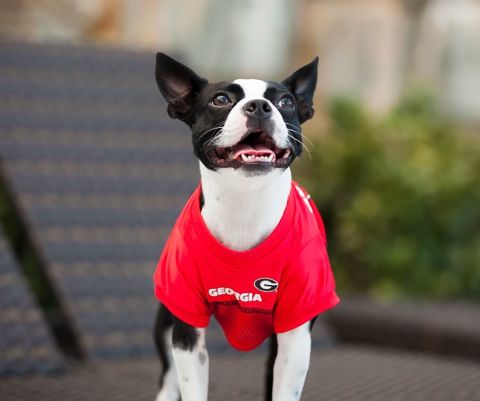
Photos: Humans are to blame for puppy dog eyes
Courtesy Phoebe Thiraveja
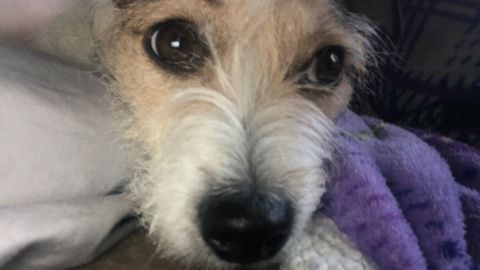
Photos: Humans are to blame for puppy dog eyes
Courtesy Ryan Pollyea
See those sweet, doleful eyes? Wolves don’t have the facial muscles to accomplish that look. Humans began breeding the ability for dogs like Evie, a terrier mix, to gaze soulfully into a person’s eyes some 30,000 years ago.

Photos: Humans are to blame for puppy dog eyes
Courtesy Zac May
Dogs like Daisy, a black Labrador mix, have “fast-twitch” facial muscles that today’s wolves don’t have. Those muscles allow dogs to quickly respond to us in ways that mimic an infant’s face, boosting the release of oxytocin, the “love” hormone.
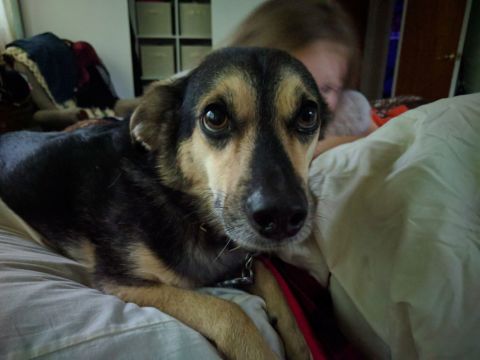
Photos: Humans are to blame for puppy dog eyes
Courtesy Cat Meyers
Dogs like Garrus, a Husky Border collie mix, have perfected the begging look. “Dogs are unique from other mammals in their reciprocated bond with humans which can be demonstrated though mutual gaze, something we do not observe between humans and other domesticated mammals such as horses or cats,” said Anne Burrows, a professor in the department of physical therapy at Rangos School of Health Sciences at Duquesne University in Pittsburgh.

Photos: Humans are to blame for puppy dog eyes
Courtesy Skye Huang
Eevee, a corgi who always begs for food, is using a muscle that wolves don’t have to raise an inner “eyebrow.” That allows her to show the whites of her eyes, making her more expressive (and successful in tugging at humans’ heartstrings).
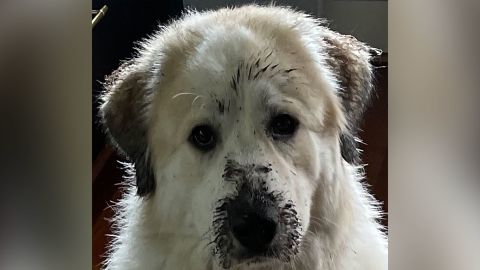
Photos: Humans are to blame for puppy dog eyes
Courtesy Julia Meo
“Sweet Dora the Giant Puppy,” as her mom calls her, is a 1-year-old Great Pyrenees who enjoys playing in the mud and begging for cheese.
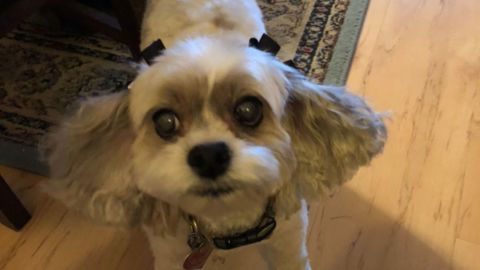
Photos: Humans are to blame for puppy dog eyes
Courtesy Ryan Pollyea
Molly, a cockapoo mix, is using her facial muscles to look like humans do when they are sad, “making (dogs) irresistible and resulting in a nurturing response from humans,” said Madisen Omstead, laboratory manager for the Rangos School of Health Sciences department of physical therapy.

Photos: Humans are to blame for puppy dog eyes
Courtesy Pascale Sauvage
People are still unconsciously selecting “puppy dog eyes” in their choice of pet today, experts say. Kimchi, a chocolate Labrador that’s 1 ½ years old, is begging to get on her person’s bed for a nap.
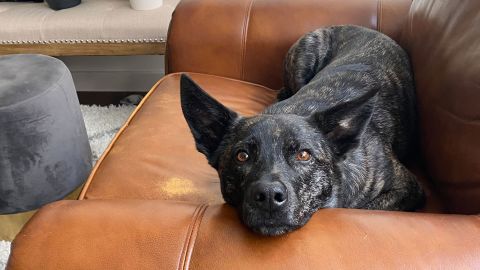
Photos: Humans are to blame for puppy dog eyes
Courtesy Nic Phelps
A 2013 study found dogs like Nasus (pictured here) who use sweet expressions more frequently “were rehomed more quickly than less expressive dogs, reinforcing this type of evolutionary scenario,” Omstead said. Nasus, who is a Formosan Mountain Dog from Taiwan, was a rescue.
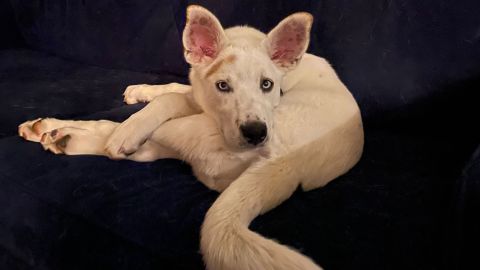
Photos: Humans are to blame for puppy dog eyes
Courtesy Nic Phelps
Nymeria, a year-old Husky mix who is deaf, uses her puppy dog eyes to woo her person into giving her extra love and playtime.
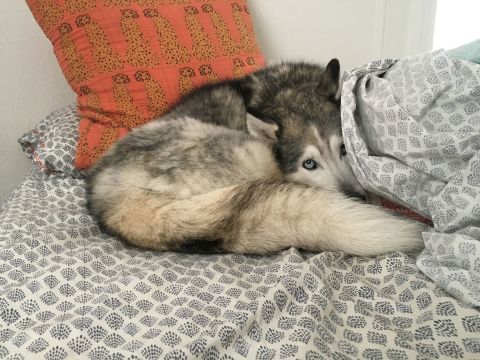
Photos: Humans are to blame for puppy dog eyes
Courtesy Brawner Raymond
Siberian huskies, which are more closely related to wolves than many other breeds, may not have these extra muscles, experts say. (We beg to differ when it comes to this 10-year-old Siberian husky, Delilah.)
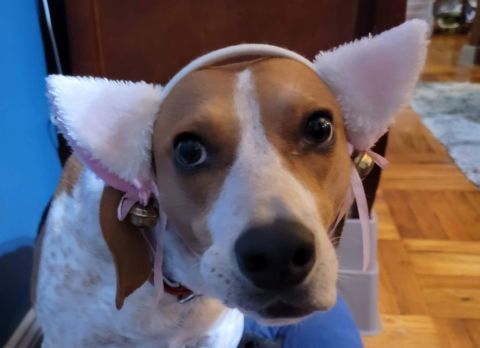
Photos: Humans are to blame for puppy dog eyes
Courtesy Cat Meyers
Revan, whose name comes from Star Wars “Darth Revan.” is a Foxhound Coonhound mix adopted as a stray. He is “totally begging to have the kids take that thing off his head,” said his mom.

Photos: Humans are to blame for puppy dog eyes
Courtesy Jonathan Otto
Look at Edison, a miniature Australian shepherd! Many dogs have another muscle, called the retractor anguli oculi lateralis muscle, which pulls the corners of the eyelids towards the ears, in effect producing what humans would call an “eye smile.” A 2019 study found that, while wolves had a bit of this muscle fiber, most domesticated dogs had a more fully developed muscle and used it frequently.
CNN —
Are you a sucker for large, liquid “puppy-dog” eyes gazing soulfully up at you, begging for, well, just about anything?
Of course you are, but don’t blame your pup. A new study finds that humans are the culprit behind those irresistibly sweet peepers – in fact, we bred those doleful eyes into today’s domesticated dogs starting some 33,000 years ago.
“Dogs are unique from other mammals in their reciprocated bond with humans which can be demonstrated though mutual gaze, something we do not observe between humans and other domesticated mammals such as horses or cats,” said senior author Anne Burrows, a professor in the department of physical therapy at Rangos School of Health Sciences at Duquesne University in Pittsburgh, in a statement.
“Throughout the domestication process, humans may have bred dogs selectively based on facial expressions that were similar to their own,” Burrows said.
It turns out that dogs, when compared with their genetic cousin the wolf, have more “fast-twitch” facial muscles, Burrows said. That allows dogs to more closely mimic our expressions – or at least look at us in ways that melt our hearts.
“Over time dog muscles could have evolved to become ‘faster,’ further benefiting communication between dogs and humans,” Burrows said.
Fast-twitch fibers are in muscles all throughout the body, allowing us to make sudden, more powerful movements, such as erupting off a starting block in a race. However, fast-twitch muscles tire quickly, so we can’t keep up that intensity for long.
Just as their name implies, slow-twitch muscle fibers function in a more even, leisurely way, such as enabling a runner to function in long marathons where energy needs to last.
Tiny “mimetic” muscles help form facial expressions in mammals. In people, those muscles contain a good many fast-twitch fibers, which enable us to form facial expressions quickly and easily – imagine flashing a big smile in response to a joke or compliment.
The study, presented Tuesday at the American Association for Anatomy annual meeting in Philadelphia, examined fibers in facial muscle samples from both wolves and domesticated dogs.
Results showed wolves have a lower percentage of fast- verus slow-twitch fibers compared with today’s domesticated dogs. Having slow-twitch muscles around the eyes and face would be helpful to wolves as they howl, the researchers said, while having more fast-twitch muscles would help dogs get their owners’ attention with short, fast barks and more varied expressions.
“These differences suggest that having faster muscle fibers contributes to a dog’s ability to communicate effectively with people,” Burrows said.
Wolves also lack another ability that most dogs have, according to a previous 2019 study by Burrows and her team. That study found dogs have a muscle called the levator anguli oculi medialis, which can raise their inner “eyebrow,” thus making the eye look larger and more infantlike.
“This eyebrow movement creates the ‘puppy-dog eyes’ expression, resembling facial expressions humans make when we are sad, making them irresistible and resulting in a nurturing response from humans,” said coauthor Madisen Omstead, laboratory manager for the Rangos School of Health Sciences department of physical therapy.
“We also know that we are still unconsciously selecting these characteristics in dogs,” Omstead said, pointing to a 2013 study that showed dogs who use those expressions more frequently “were rehomed more quickly than less expressive dogs, reinforcing this type of evolutionary scenario even today.”
Another muscle, called the retractor anguli oculi lateralis muscle, pulls the outer corners of the eyelids toward the ears, in effect producing what humans would call an “eye smile.” The 2019 study found that while wolves had a bit of this muscle fiber, most domesticated dogs had a more fully developed muscle and used it frequently.
The exception to that rule is the Siberian husky, which is more closely related to wolves than many other breeds, the researchers said.
If muscles that allow your dog to smile and look sweet aren’t enough, looking into the eyes of our “best friends” also appears to trigger an “oxytocin feedback loop” between humans and our dogs – much like the one that exists between human mothers and their infants, according to researchers.
Source: https://www.cnn.com/2022/04/05/health/puppy-dog-eyes-wellness-scn/index.html


















